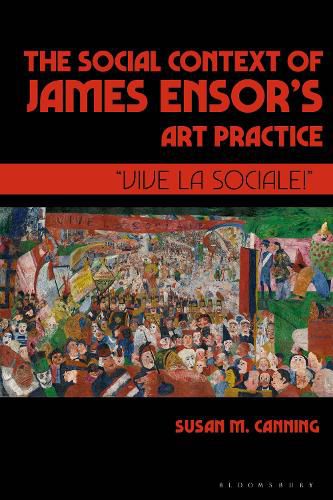Readings Newsletter
Become a Readings Member to make your shopping experience even easier.
Sign in or sign up for free!
You’re not far away from qualifying for FREE standard shipping within Australia
You’ve qualified for FREE standard shipping within Australia
The cart is loading…






Vive la Sociale : This rousing, revolutionary statement, written on a bright red banner across the top of James Ensor’s Christ’s Entry into Brussels in 1889, served as a visual manifesto and call to action by the Belgian artist (1860-1949), one that announced with an insistent, public voice the centrality of his art practice to the cultural discourse of modern Belgium. This provocative declaration serves as the title for this new study of Ensor’s art focusing on its social discourse and the artist’s interaction with and at times satirical encounter with his contemporary milieu.
Rather than the alienated and traumatized Expressionist given preference in modern art history, Ensor is presented here as an artist of agency and purpose whose art practice engaged the issues and concerns of middle class Belgian life, society and politics and was informed by the values and class, race and gendered perspectives of his time. Ensor’s radical vision and oppositional strategy of resistance, self-fashioning and performance remains relevant. This book with its timely, nuanced reading of the art and career of this often misunderstood artist’s artist , invites a re-evaluation not only of Ensor’s social context and expressive critique but also his unique contribution to modernist art practice.
$9.00 standard shipping within Australia
FREE standard shipping within Australia for orders over $100.00
Express & International shipping calculated at checkout
Vive la Sociale : This rousing, revolutionary statement, written on a bright red banner across the top of James Ensor’s Christ’s Entry into Brussels in 1889, served as a visual manifesto and call to action by the Belgian artist (1860-1949), one that announced with an insistent, public voice the centrality of his art practice to the cultural discourse of modern Belgium. This provocative declaration serves as the title for this new study of Ensor’s art focusing on its social discourse and the artist’s interaction with and at times satirical encounter with his contemporary milieu.
Rather than the alienated and traumatized Expressionist given preference in modern art history, Ensor is presented here as an artist of agency and purpose whose art practice engaged the issues and concerns of middle class Belgian life, society and politics and was informed by the values and class, race and gendered perspectives of his time. Ensor’s radical vision and oppositional strategy of resistance, self-fashioning and performance remains relevant. This book with its timely, nuanced reading of the art and career of this often misunderstood artist’s artist , invites a re-evaluation not only of Ensor’s social context and expressive critique but also his unique contribution to modernist art practice.